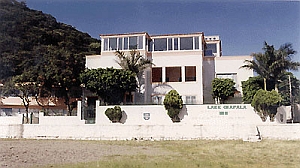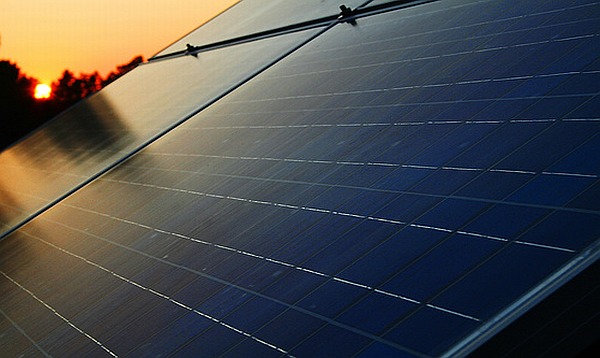Jalisco, Mexico - As a clear sign that the green revolution is gaining ground along the shorelines of Mexico’s largest lake, forward-thinking business leaders such as Alicia McNiff are starting to opt for cutting-edge technology that benefits both their pocketbooks and the environment.
As proprietress of the Lake Chapala Inn, McNiff recently took the plunge to install a rooftop photovoltaic (PV) solar energy system to generate most of the electricity needed to run her posh waterfront bed and breakfast. With that canny decision she has earned the distinction of running the north shore’s one and only sun-powered lodging facility and, as far as she knows, the first of its kind in all of Jalisco’s huge hotel industry.
Explaining her reasons for switching to solar energy, McNiff said, "Even more than saving in electricity costs, we wanted to participate in doing something in a small way to help save our beautiful planet."
 |
| Jalisco's Lake Chapala Inn |
McNiff turned to eSun Energy, the area’s leading solar solution outfit, to design and retrofit the B&B’s electrical system. The 13 crystalline silicon panels installed on the building’s rooftop are capable of capturing enough sun rays to supply about 90 percent of the hostel's energy needs.
The company also put in an ultra-efficient pump to save energy for operating the inn’s swimming lap pool. Now McNiff is considering the purchase of solar water heating equipment as the next step in going green.
"Mexico is an ideal place for converting to solar energy," explains solar energy technician Tamaz Fuleki. "The country sits on the perfect latitude to draw daytime sunlight all year round."
Besides that, most of Mexico’s consumers pay extremely high prices for electrical service from the nation’s Comision Federal de Electricidad (CFE) utility company because it depends so heavily on increasingly expensive fossil fuels to generate power.
More than 70 percent of the CFE grid is fueled by natural gas, fuel oil, and coal, with 20 percent coming from hydroelectric plants, about four percent from the country’s only nuclear facility at Laguna Verde in Veracruz, and under three percent from non-conventional renewable sources such as sun and wind.
While McNiff underscores her motivation from an environmental perspective, she acknowledges that going solar will be a plus for the hotel’s bottom line. "I’ve paid the CFE’s steep business rate and have seen costs consistently spiral upwards," she said.
"Alicia can expect a 90 percent net savings on her CFE bills," says e-Sun CEO Jsun Mills. "Her bimonthly payments should immediately drop from an average of $5,000 to around $500 pesos." Based on the standard 25-year life of a PV system, he estimates that she and the outfit’s other 150 lakeside customers will see a return on their investments within in four to five years.
Aside from cost benefits, converting to solar energy favors the environment by reducing CO2 emissions. And most of the equipment is made up of recyclable materials with earth-friendly manufacturing processes.
Another advantage of this renewable energy source is the generation of surplus electricity. What surplus energy means to entrepreneurs and homeowners alike is the accumulation of power credits with CFE that are utilized during periods when cloudy and rainy weather conditions prevent PV systems from tapping on the sun. At optimum operation, solar equipment actually feeds power back into the CFE grid. Whenever that happens, the utility’s meters start rolling backwards.
Contrary to what some might believe, Chapala CFE executives are "happy and excited" about the area’s growing solar energy market, Mills remarks. "We have built an excellent alliance with CFE. They recognize that we’re putting free energy into the grid, which allows them to provide some of their power at absolutely no cost."
Lakeside has become such fertile ground for purveyors of alternate energy that there are already more solar power users there than in the Guadalajara metro area. Further, CFE Chapala recently gained an award for having linked in to more PV systems than any other regional office nationwide.


